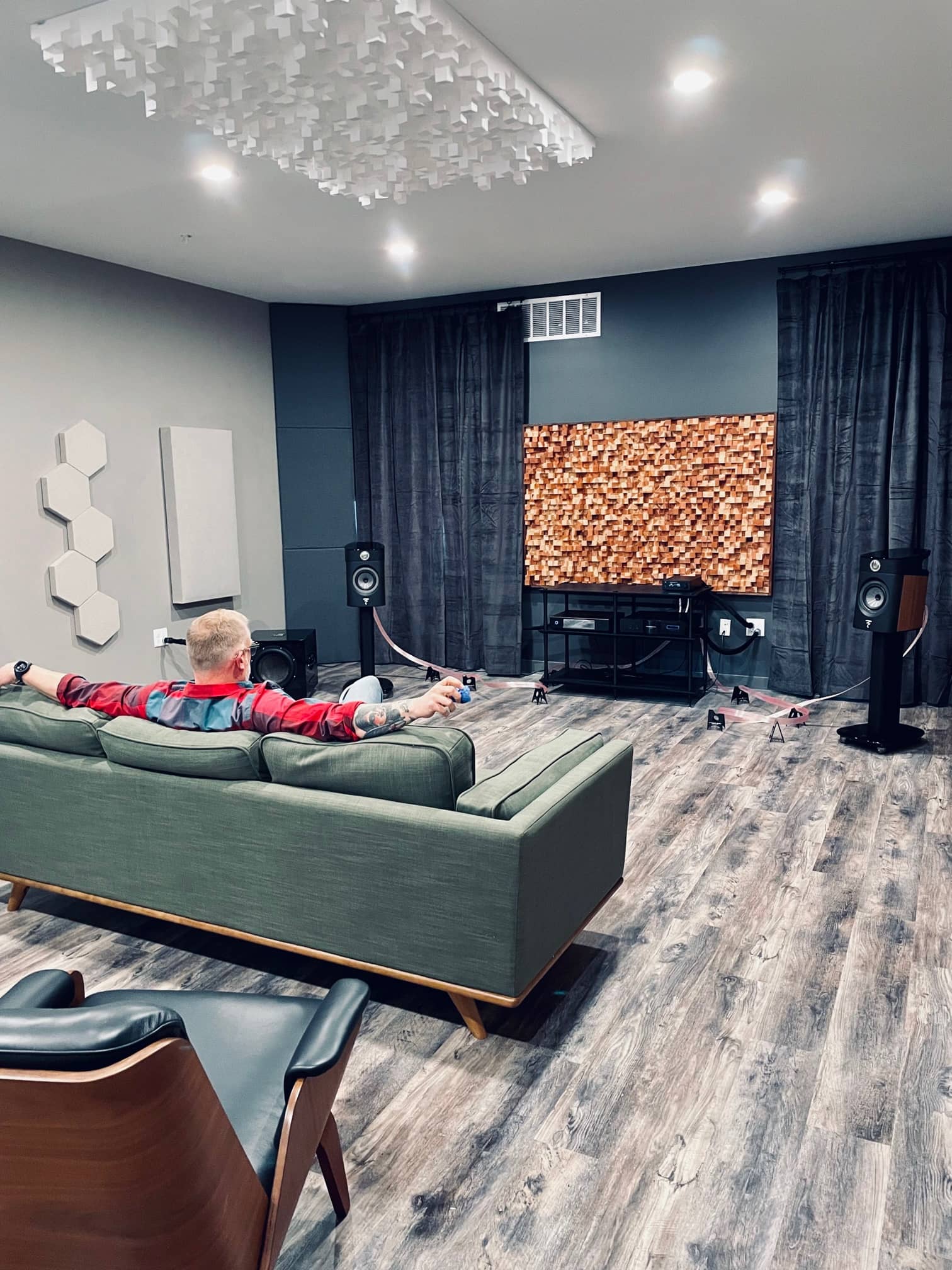Krell K-300i Review, Part 3: Listening Impressions, System Matching & Final Verdict

For my serious listening sessions with the K-300i, I used two very different speaker setups. Around the same time of my evaluation period with the K-300i, I was also auditioning the new and improved Model Five speakers from KLH.
Yin & Yang
One of the things we love at The Music Room is a product that hits above its weight class - er, price point - and presents itself as an incredible value. At roughly $2,500 a pair, the award-winning Model Fives from KLH (which will soon be available from The Music Room, by the way) show that they are more than capable as a true HiFi speaker. This is especially evident when it’s powered by a state-of-the art amplifier like the K-300i.
Some would look at the price differences of the K-300i and the KLH Model Five as something of a mismatch. I would counter with this observation: the K-300i is an amplifier, a preamplifier, a DAC and a streamer in one device, and when the prices of each are added up, it appears more to me like a perfectly commensurate dancing partner for the reinvented speaker from the vintage brand. In fact, given that point it seems like a fitting pairing in the sense that the K-300i also delivers more than the sum of its parts.
Supplied appropriately excellent speaker cables and power cable, this simple one-box-and-two-speakers system presents to my ears as the simplest and most streamlined path to a serious audiophile experience I know of.
Besides excellent cabling, I’m also a big proponent of both adequate burn-in time for new components, and of keeping solid state amplifiers on for a day or two before listening. Some might call that a touch of the “snake oil,” but my listening experiences have shown these two elements to be very important. Unless they are true Class A devices, I keep my solid state gear on 24/7.
I gave the K-300i around 400 hours of various work (burn-in CDs, background music, etc.) before seriously listening, and had it running for at least a day before even unboxing the KLH speakers. Once I felt satisfied I was giving the machine its best chance to shine, it was time to open Roon and find some great music which would showcase what the pairing could do. The first album was a no-brainer.

Firing up Icelandic songstress Arny Margret’s recent EP, Intertwined, the floating visage of Margret hung aloft effortlessly between the Fives. The K-300i’s ability to express the tiniest details of this intimate recording is astounding.
I could hear her subtle heel taps in the bass region on my favorite track, “in tall buildings,” sense her head movements away and toward the vocal microphone, and hear the naturalness of the sound of her finger picked guitar laid bare in the glorious tapestry of music created by this system.
I’ve heard this album on many systems at this point, and the Krell/KLH combo really nailed the recording. What I was hearing was a true high end system. The preservation of those fine elements even at low volumes spoke even louder to my ears as a mark of excellence for the Krell machine.
I wanted to give the Krell an opportunity in two very different settings and systems. Moving next to The Music Room headquarters, I set up the K-300i in the beautiful new Quadraspire rack which we just installed in our brand new, state-of-the-art main listening room, which we call the “Listening Lab.”
Now this is a bit of a spoiler, because I’m planning to write about our process building this room over the course of a year, and we’ll also be shooting videos from inside it very soon. But as it was finally complete and in listening shape, I really wanted to hear the Krell on more expensive equipment and in a treated and tuned room.
In this system there was a little more “HiFi” going on, with a set of Focal Sopra 1 speakers on matching stands, flanked by a pair of REL Carbon Special subwoofers. I’ve found there are two ways to set up the Focal Sopras based on what I’m going for. I can toe them out just slightly from directly on-axis to produce a very distinct center image but with a limited soundstage width, or I can cross them just in front of the listening position and make the soundstage and image depth explode in all dimensions. I prefer the latter, but other ears might enjoy the former. The Sopras’ midbass abilities are impressive without the need for coupling, so a wide setup is generally advised, depending, of course, on the room..
I also wanted to bring some different components into the equation for this location, testing more the K-300i’s abilities as a pure integrated amplifier. After connecting an Aurender N10 to a Weiss DAC501 and adding balanced XLRs to the system, I settled into the olive green couch, moved the fuzzy pillows out of my soundstage and pressed play.

Sinking into Svaneborg Kardyb’s latest release, Haven, was a revelation. Track three, “Til Eline,” threw up such an immersive and deep 3D soundfield in this second system that my jaw literally dropped. Almost headphones-like was the immersive nature of this presentation, yet the placement of all of the synth and percussion elements in the track were displayed much more accurately and vividly than any set of headphones I’d heard.
The faint, bedrock sustain of the subtly undulating background synth seemed, for the first time to my ears, successfully separated from the melody synth which hung well-defined at center stage.
Similarly, the “field recording” element of track six, “Sommer,” along with its natural-sounding wind chimes performed the work of a shoulder massage to relax me into the realistic presentation. While the memorable synth melody played out in the center image, I was mentally transported to a sunny porch next to a busy park on a summer day.
Reaching for my tall glass of lemonade, it wasn’t until my fingers grasped nothing that I whipped back to reality and remembered I was in a listening room and not outdoors. Knowing the difficult task of every amplifier to provide power yet preserve delicacy, I left this listening session more impressed than ever in the Krell K-300i.
Conclusion
By the end of my time with the glorious K-300i integrated amplifier from Krell, I no longer saw it as an “unassuming” box or a product in need of a facelift. Having had my sonic and working experiences with the device, I now see it and love it for what it is: an MVP of the audio rack, fairly un-flashy but packed with skill and finesse. Like the Rams receiver, this amplifier delivered in spades every time it was tested.
No matter the room size or speaker pairing, the K-300i filled the space with glorious Class A sound, and showed impressive audiophile qualities while doing so. No matter the digital or analog input, the K-300i made connection a breeze.
The K-300i is for those who want to move away from a rack full of separate components toward a more minimalistic solution, without losing any speck of HiFi enjoyment. The HDMI connection furthers this goal, allowing extreme multi-use in high fidelity.
It now sits in that enviable category in The Music Room’ catalog as a product which performs far above its expectations. Even at its impressive price, it offers an extreme value for the components it replaces and the skill with which it does so.
This one gets the highest recommendation from me, and has earned its spot in The Music Room’s new Listening Lab lineup. Hats off to Krell for yet one more groundbreaking and memorable amplifier in their long history of such products.

(TMR's director of marketing, Matt Hessler, in the new TMR's Listening Lab)
